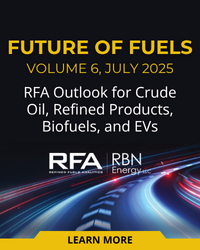Large-scale and well-funded producers in the Permian have built dedicated gathering systems and signed up for pipeline-takeaway options to keep their barrels moving to markets at the Gulf Coast and Cushing. For the most part, smaller producers don’t have the same options, for a variety of reasons. More and more, barrels from outside the core areas of the Permian are competing for the last bits of pipeline space and producers are being forced to rely more heavily on Permian trucking companies to help keep their crude flowing. Truckers are being asked to make less desirable, less economical and longer hauls, and are passing those costs back to the producer. With pipeline takeaway capacity maxed out, trucking capacity is being pushed to the limit too, with several potential upstream impacts. Today, we look at trucking options for smaller producers in second-tier production areas, the impact of boom-bust cycles on trucking companies and what tight trucking capacity means for the basin as a whole.
In Part 1 of this series, we discussed the recent blowout in differentials between crude oil at Midland and crude in Cushing and the Gulf Coast — widening spreads that were a result of massive and sustained production growth in the Permian and a lack of significant new takeaway capacity until 2019. In Part 2, we looked at smaller exploration and production companies (E&Ps), which are taking a more active approach in developing — and thereby proving the value of — more economically challenging “Tier 2” acreage. These new Tier 2 production trends are adding incremental production to the glut of crude in the basin and forcing producers to compete even harder for any and all available takeaway capacity. In Part 3, we discussed the challenges these smaller producers face without dedicated gathering systems or firm space on takeaway pipes. Today, we’ll get even closer to ground level and explore the potential impacts of Permian producers relying heavily on trucking operations to move their crude.
Before we do, though, we’ll provide a brief update on the latest developments — things are changing by the day or even by the hour, it seems. First, as shown in Figure 1, the differentials between West Texas Intermediate (WTI) at Midland and Cushing (blue line) and between WTI-Midland and Magellan East Houston (MEH) crude at the Gulf Coast (orange line) widened significantly this week — putting the Midland-Cush spread at $8/bbl as of Wednesday (April 25, 2018) and the Midland-MEH spread at $10.10/bbl the same day. And forward markets suggest these disturbingly wide differentials (for Permian producers, at least) may be hanging around for several months as rising Permian production overwhelms static pipeline takeaway. [We should note that the prices being paid for crude in Permian production areas are lower than at the Midland hub itself in order to cover trucking and shuttle-pipeline transportation costs to Midland — we hear prices are $4 to $8/bbl less than the Midland posting at the lease in the Delaware Basin and $1 to $3/bbl less than the Midland posting at the lease in the Midland Basin. In other words, producers are taking huge hits.]
Join Backstage Pass to Read Full Article







